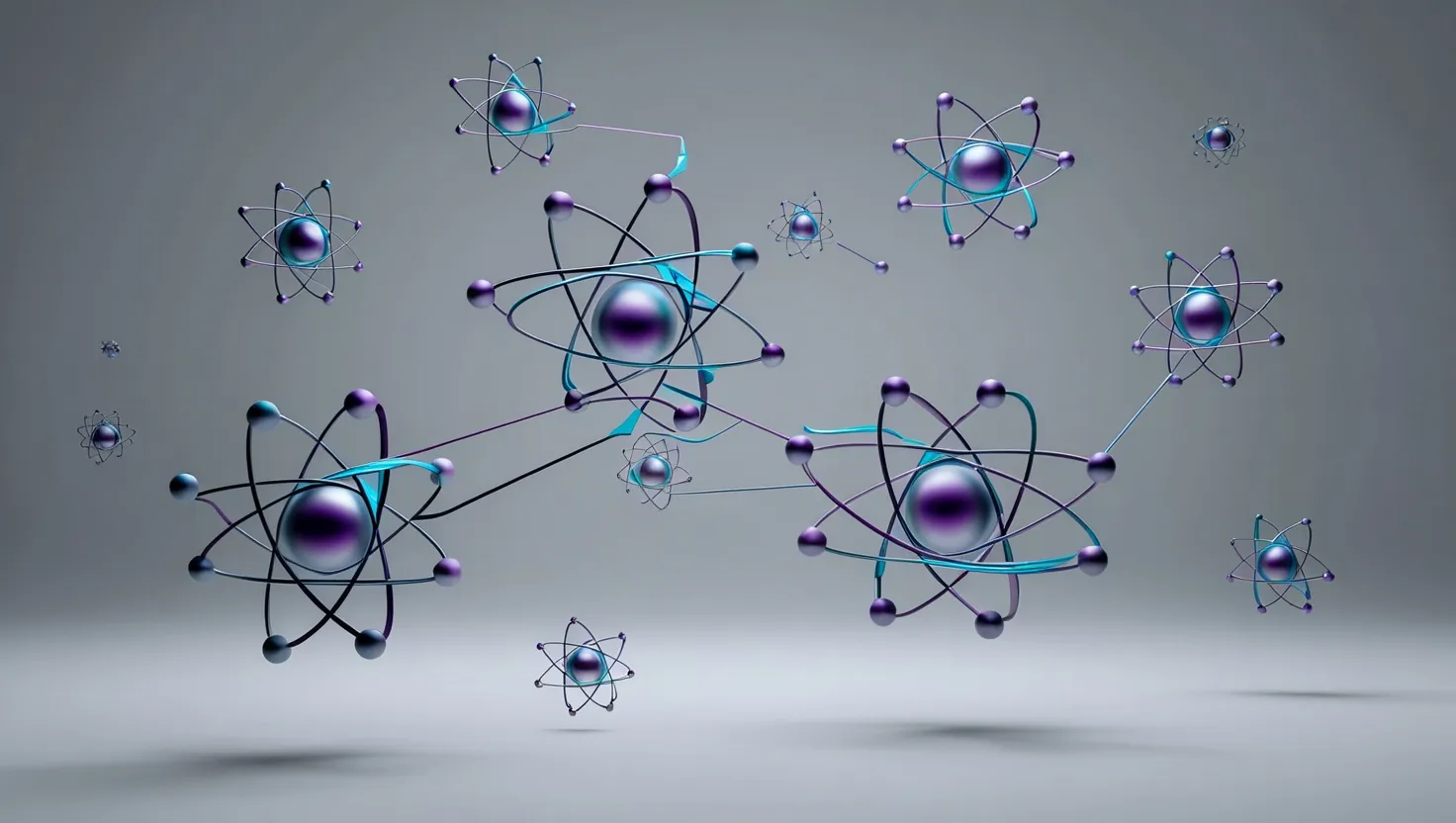Quantum chemistry has revolutionized our understanding of molecular processes, pushing the boundaries of what we thought possible in the realm of chemical interactions. As we delve into six remarkable breakthroughs in this field, we’ll explore how quantum mechanics is reshaping drug development, materials science, and chemical engineering.
Let’s start with molecular structure prediction using quantum algorithms. This advancement has transformed how we approach drug design and materials engineering. By harnessing the power of quantum computing, scientists can now predict complex molecular structures with unprecedented accuracy. This capability allows researchers to simulate and analyze potential drug candidates or novel materials before synthesizing them in the lab, saving time and resources.
“The most exciting phrase to hear in science, the one that heralds new discoveries, is not ‘Eureka!’ but ‘That’s funny…‘” - Isaac Asimov
Have you ever wondered how a computer could possibly understand the intricacies of molecular behavior? The answer lies in quantum algorithms that can process vast amounts of data and account for the quantum nature of electrons and atomic nuclei. This breakthrough has opened up new possibilities for creating tailored materials with specific properties, from more efficient solar cells to stronger and lighter alloys.
Moving on to quantum simulation of chemical reactions, we find ourselves at the forefront of understanding how molecules interact and transform. Traditional methods of studying chemical reactions often fall short when dealing with complex systems. Quantum simulations, however, allow us to observe and analyze reactions at the most fundamental level.
Imagine being able to watch a chemical reaction unfold in slow motion, seeing each electron and atom move and interact. That’s essentially what quantum simulations offer. This technology has profound implications for catalysis research, enabling the design of more efficient and selective catalysts for industrial processes. It’s also proving invaluable in unraveling the mysteries of biochemical reactions, potentially leading to breakthroughs in drug development and our understanding of life processes.
Electronic structure calculations at the atomic scale represent another quantum leap in our ability to understand and manipulate matter. These calculations provide detailed insights into the behavior of electrons in atoms and molecules, which is crucial for predicting and explaining chemical properties and reactivity.
“In the beginning there was nothing, which exploded.” - Terry Pratchett
This quote might seem whimsical, but it touches on the fundamental nature of matter and energy that quantum chemistry seeks to understand. By performing these intricate calculations, scientists can now predict and explain phenomena that were once beyond our grasp. From designing more efficient batteries to developing new catalysts for clean energy production, the applications of this breakthrough are vast and varied.
What if we could control chemical reactions at the quantum level? This is precisely what the breakthrough in chemical bond formation through quantum control aims to achieve. By manipulating the quantum states of atoms and molecules using precisely tuned laser pulses, researchers can now guide chemical reactions along specific pathways.
This level of control opens up exciting possibilities for synthesizing complex molecules that were previously impossible or extremely difficult to create. It’s like having a molecular-scale remote control, allowing us to steer chemical reactions in desired directions. The potential applications range from more efficient pharmaceutical synthesis to the creation of novel materials with tailored properties.
Real-time observation of molecular transitions marks another significant milestone in quantum chemistry. Traditional spectroscopic techniques often provide only snapshots of molecular behavior. However, recent advancements in ultrafast spectroscopy and quantum-based imaging techniques now allow scientists to observe molecular changes as they happen.
“The important thing is not to stop questioning. Curiosity has its own reason for existing.” - Albert Einstein
This breakthrough is akin to watching a molecular movie in real-time. It provides unprecedented insights into how molecules change shape, form and break bonds, and interact with their environment. Such observations are crucial for understanding complex chemical and biological processes, from photosynthesis to the mechanisms of drug action in the body.
Have you ever considered how enzymes achieve their remarkable catalytic efficiency? The study of quantum effects in enzyme catalysis mechanisms is shedding light on this question. It turns out that quantum phenomena, such as tunneling and coherence, play a significant role in many enzymatic reactions.
This discovery challenges classical views of enzyme function and opens up new avenues for designing artificial catalysts. By understanding and harnessing these quantum effects, we might be able to create more efficient and selective catalysts for a wide range of industrial and biological applications. The implications for green chemistry and biotechnology are profound.
As we reflect on these six remarkable breakthroughs in quantum chemistry, it’s clear that we’re entering a new era of chemical understanding and control. From predicting molecular structures to observing real-time chemical changes, quantum chemistry is providing us with tools and insights that were once the stuff of science fiction.
These advancements are not just academic curiosities. They have far-reaching implications for many aspects of our lives. In drug development, quantum chemistry is accelerating the discovery of new medicines and helping us understand how existing drugs work at the molecular level. In materials science, it’s paving the way for new materials with properties tailored for specific applications, from more efficient solar cells to stronger and lighter materials for aerospace.
In the field of chemical engineering, quantum chemistry is revolutionizing how we design and optimize industrial processes. By providing a deeper understanding of reaction mechanisms and catalysis, it’s helping to make chemical production more efficient and environmentally friendly.
“The most beautiful thing we can experience is the mysterious. It is the source of all true art and science.” - Albert Einstein
This quote encapsulates the spirit of discovery that drives quantum chemistry. As we continue to unravel the mysteries of the quantum world, we’re not just gaining knowledge - we’re opening up new possibilities for innovation and problem-solving.
What challenges do you think quantum chemistry might help us solve in the future? Perhaps it will lead to breakthroughs in clean energy production, or help us develop new materials for space exploration. Maybe it will provide insights into the origins of life itself.
As we look to the future, it’s clear that quantum chemistry will continue to play a crucial role in shaping our understanding of the world around us. Its impact will be felt not just in chemistry labs, but in fields as diverse as medicine, environmental science, and technology.
The journey of discovery in quantum chemistry is far from over. Each breakthrough leads to new questions, new challenges, and new opportunities. As we continue to push the boundaries of what’s possible, we’re not just advancing science - we’re expanding the horizons of human knowledge and capability.
In conclusion, these six remarkable breakthroughs in quantum chemistry represent just the beginning of a new era in chemical science. They’re changing how we understand and interact with the molecular world, opening up possibilities that were once thought to be in the realm of science fiction. As we continue to explore and harness the power of quantum chemistry, we’re sure to see even more exciting developments that will shape our future in ways we can only begin to imagine.






